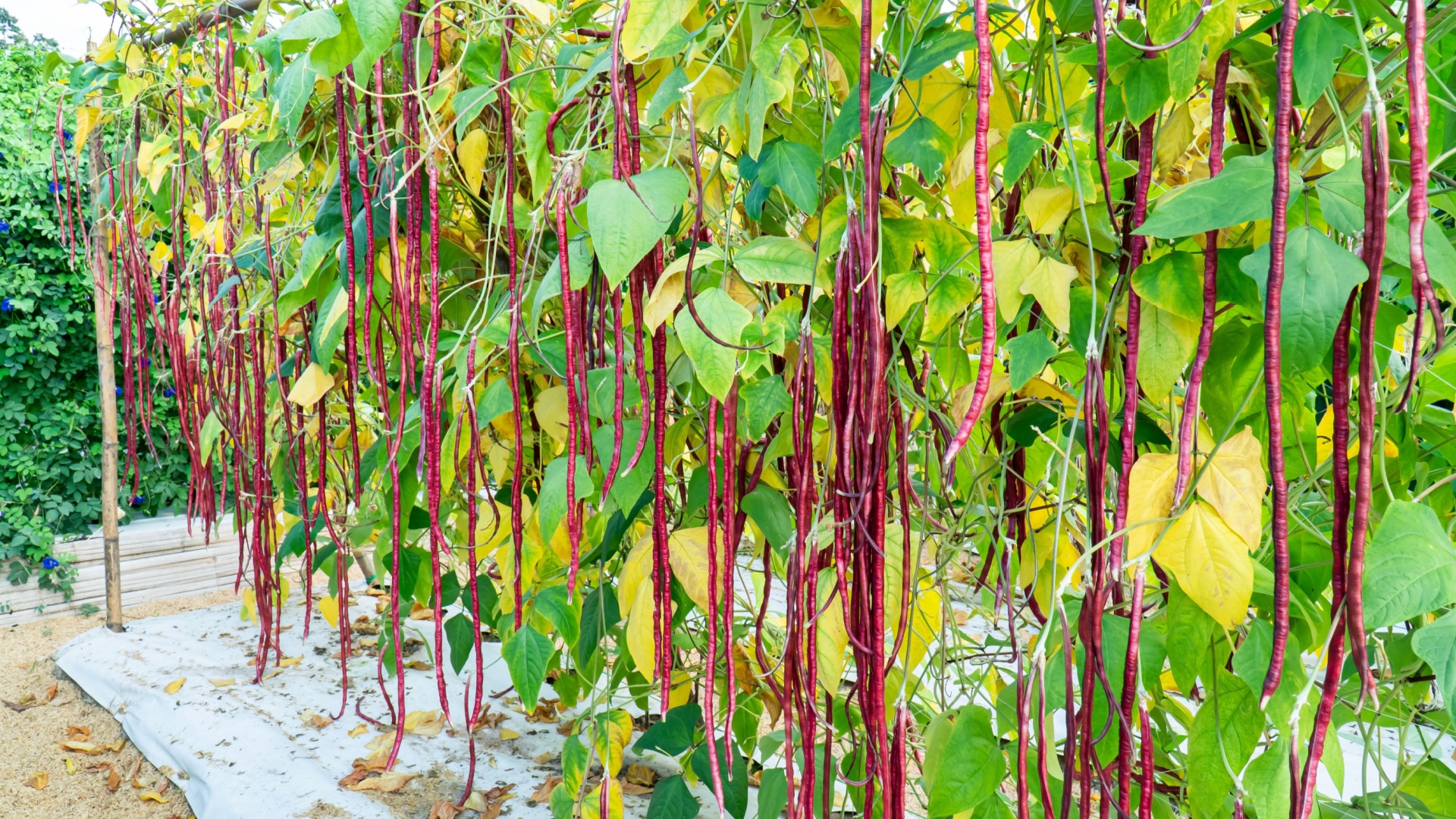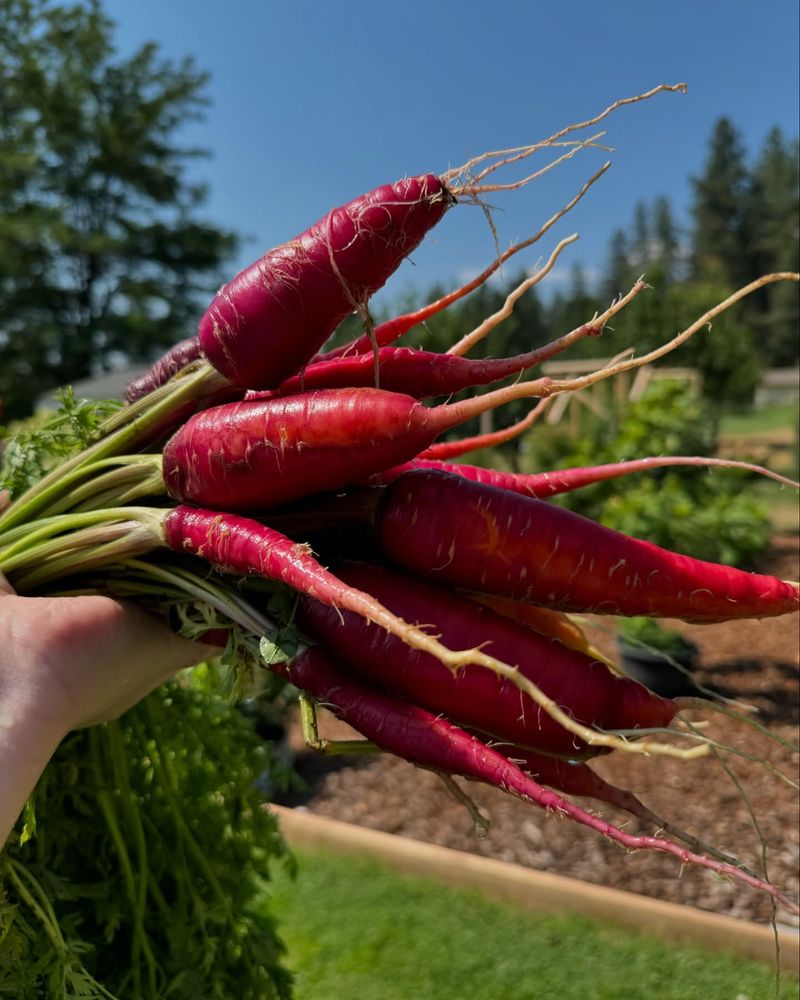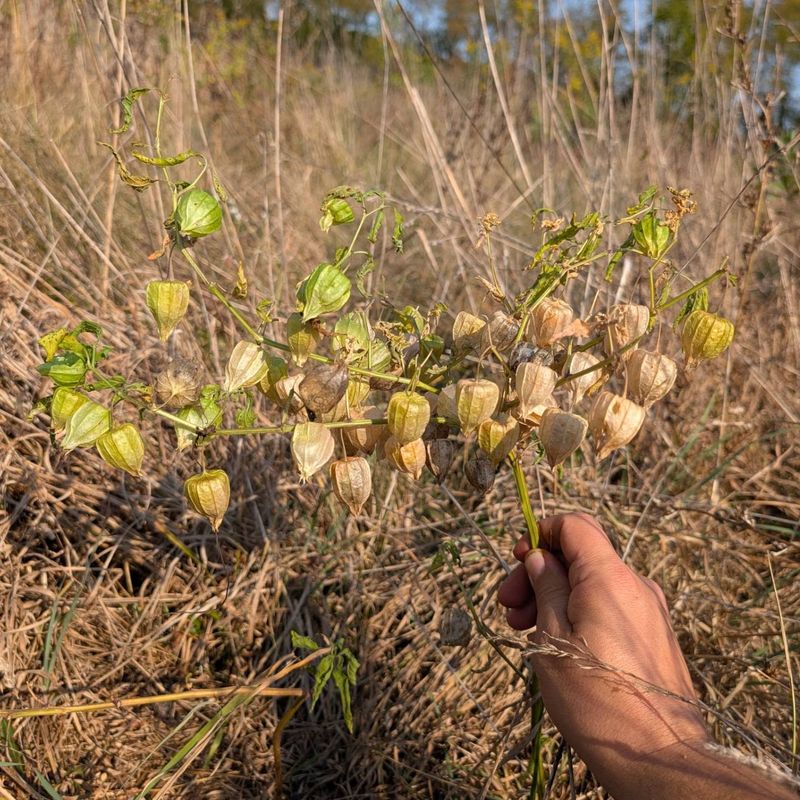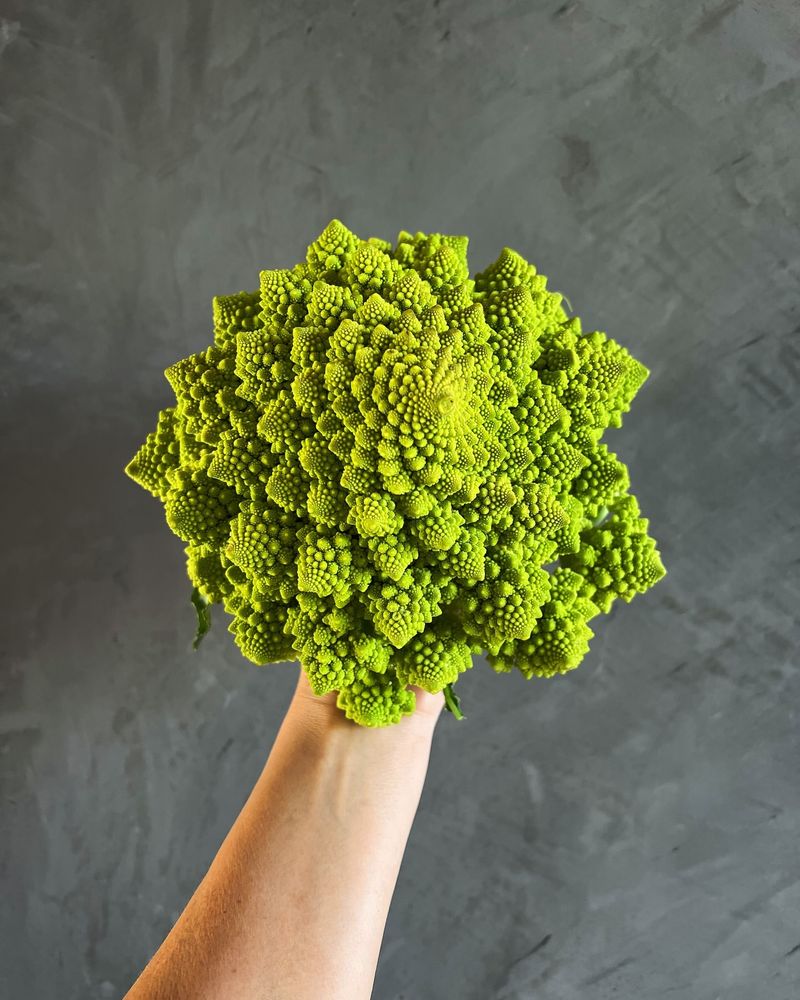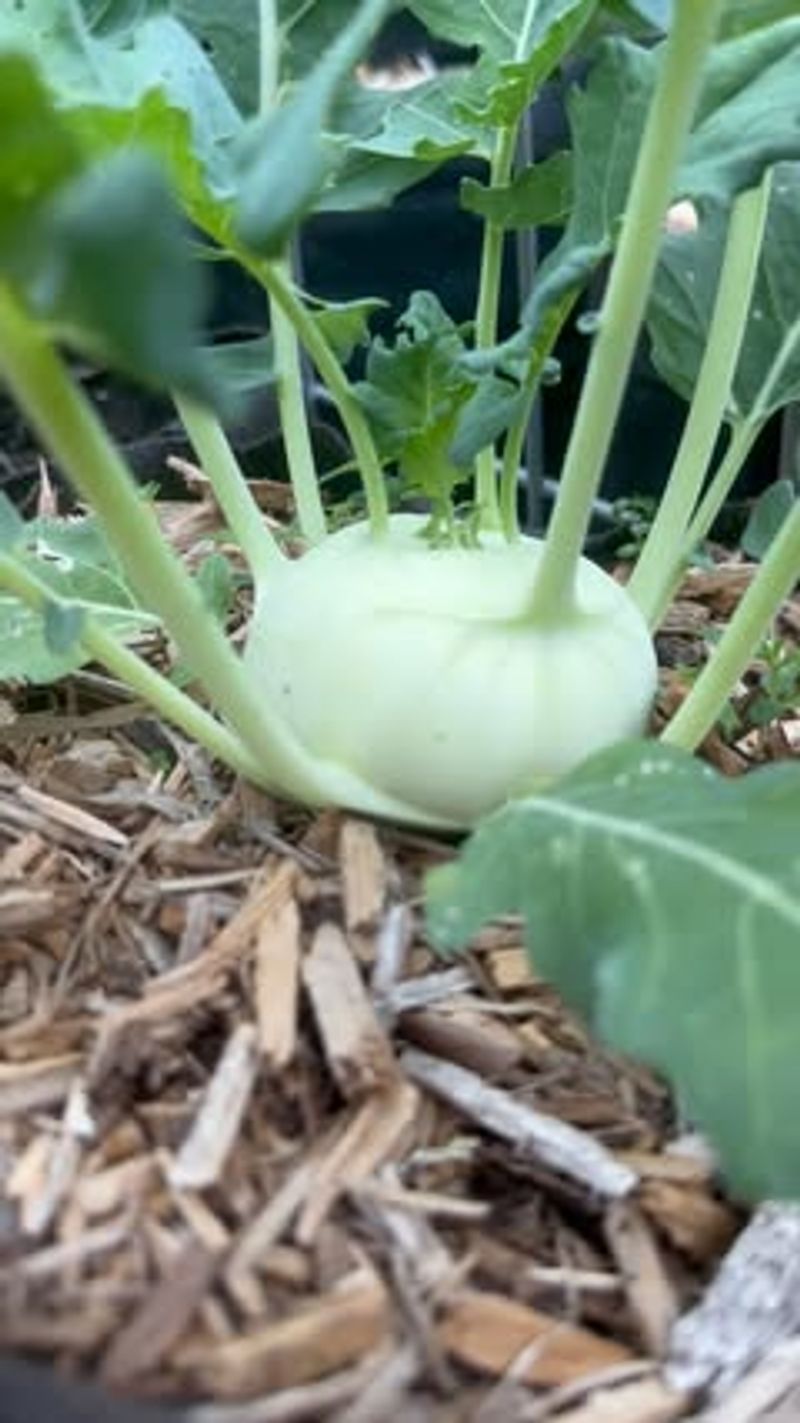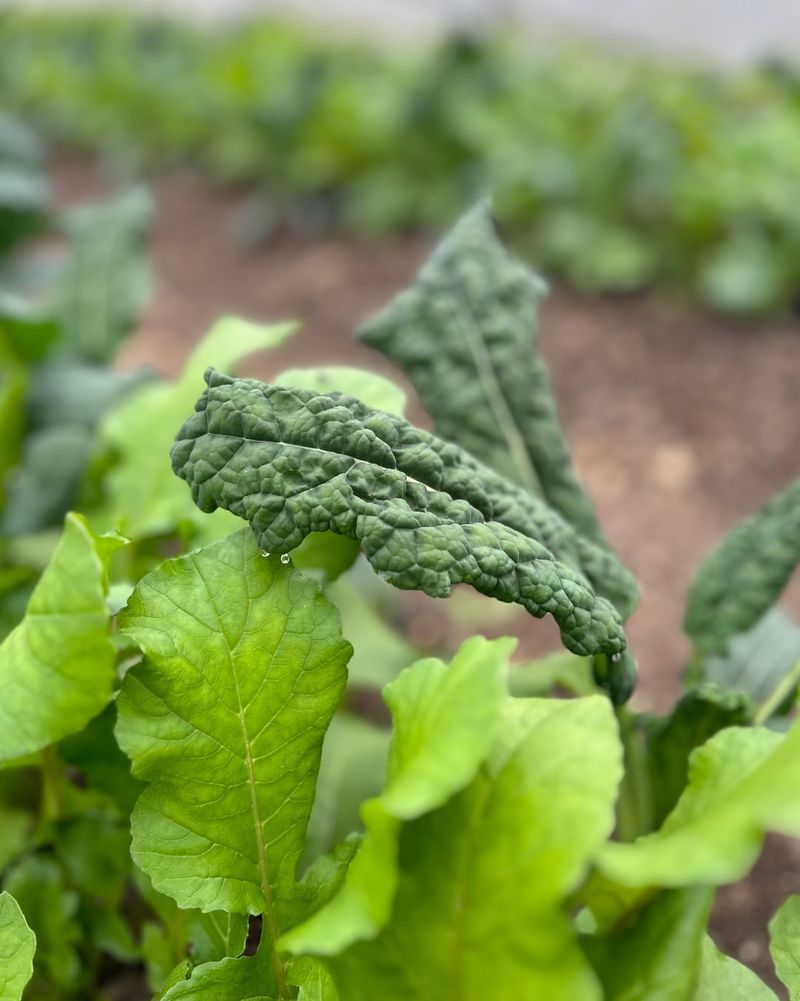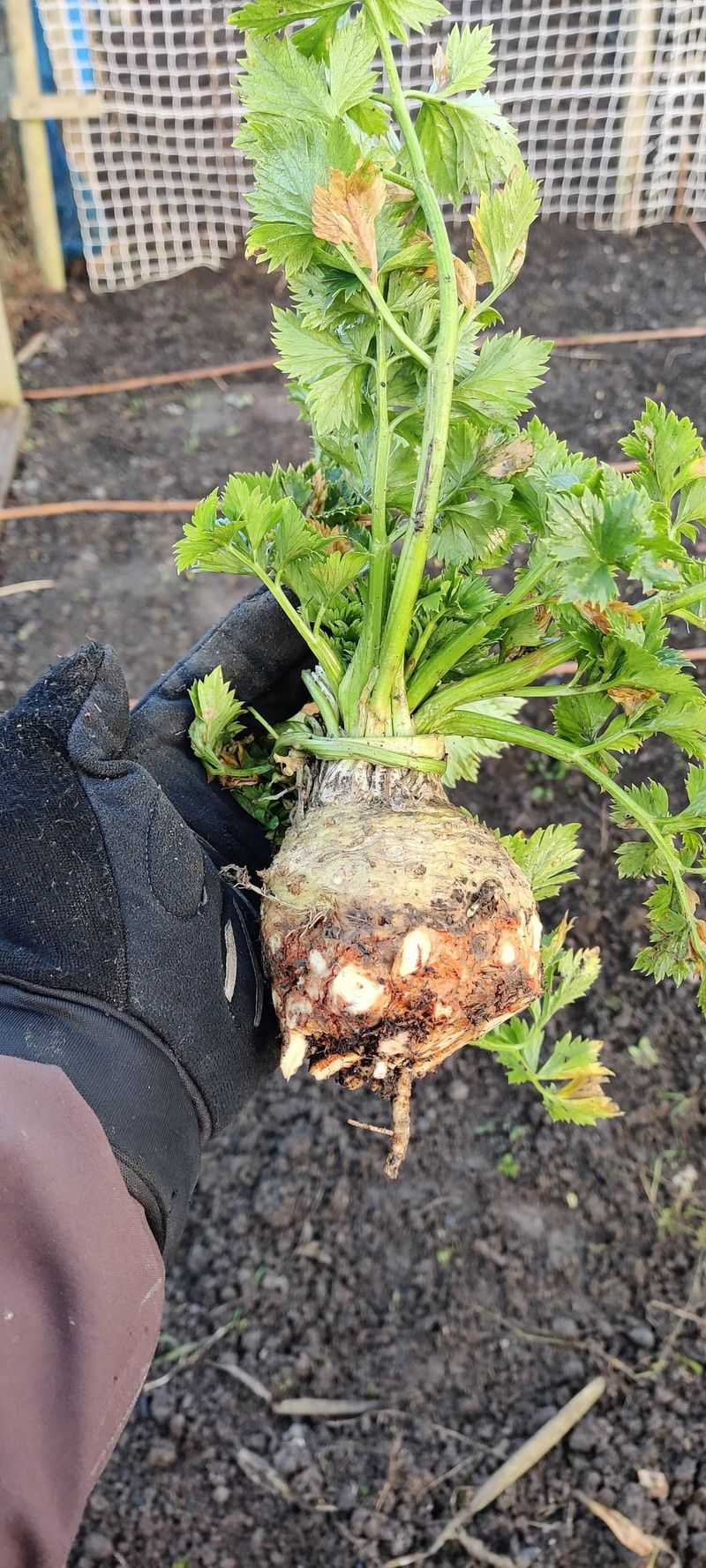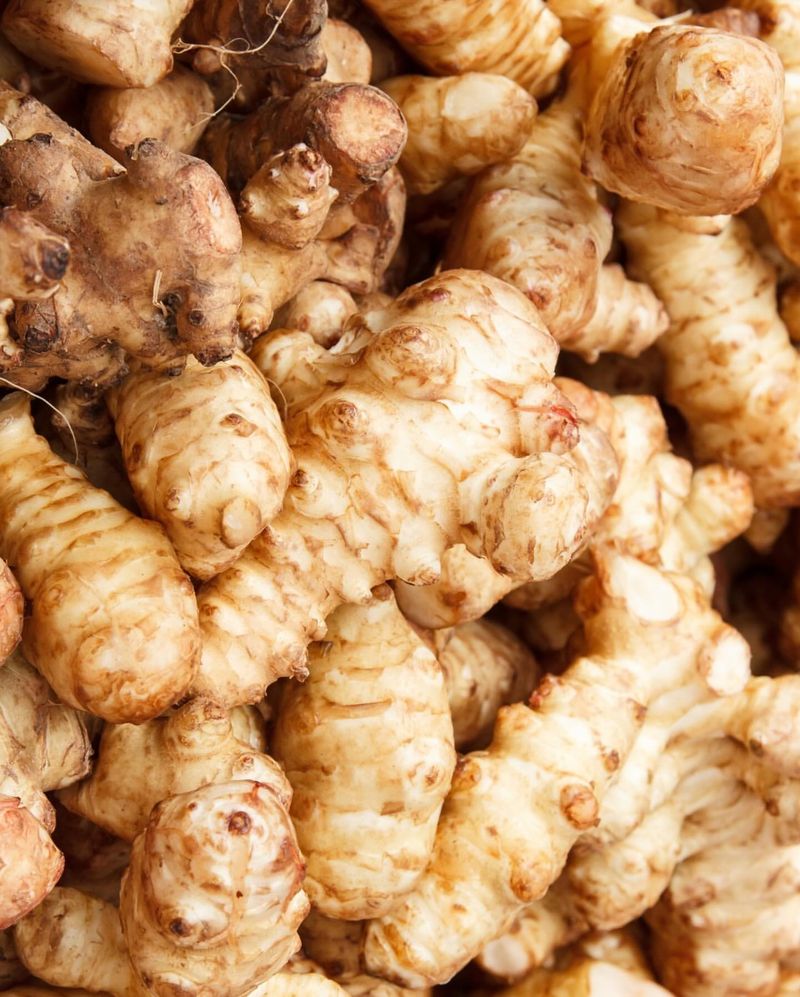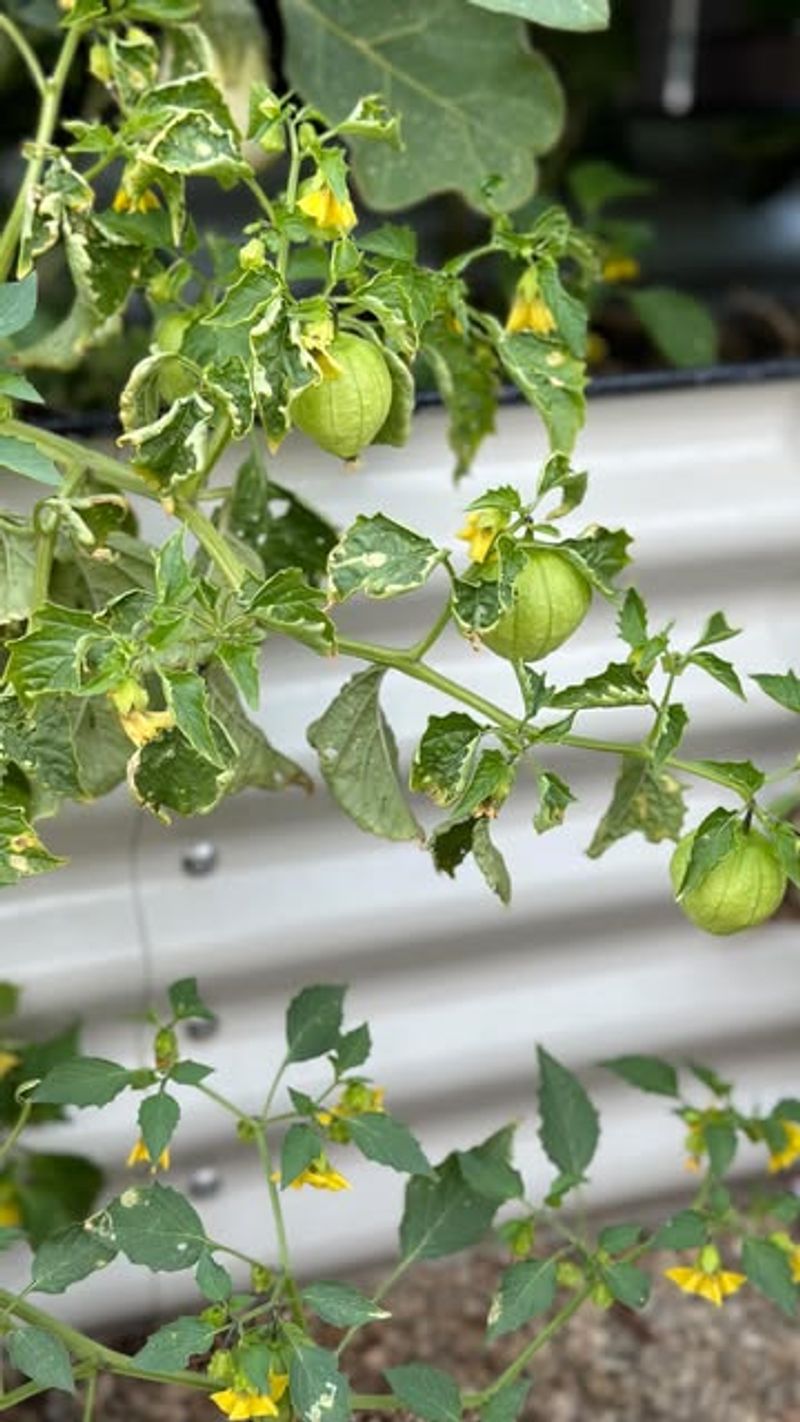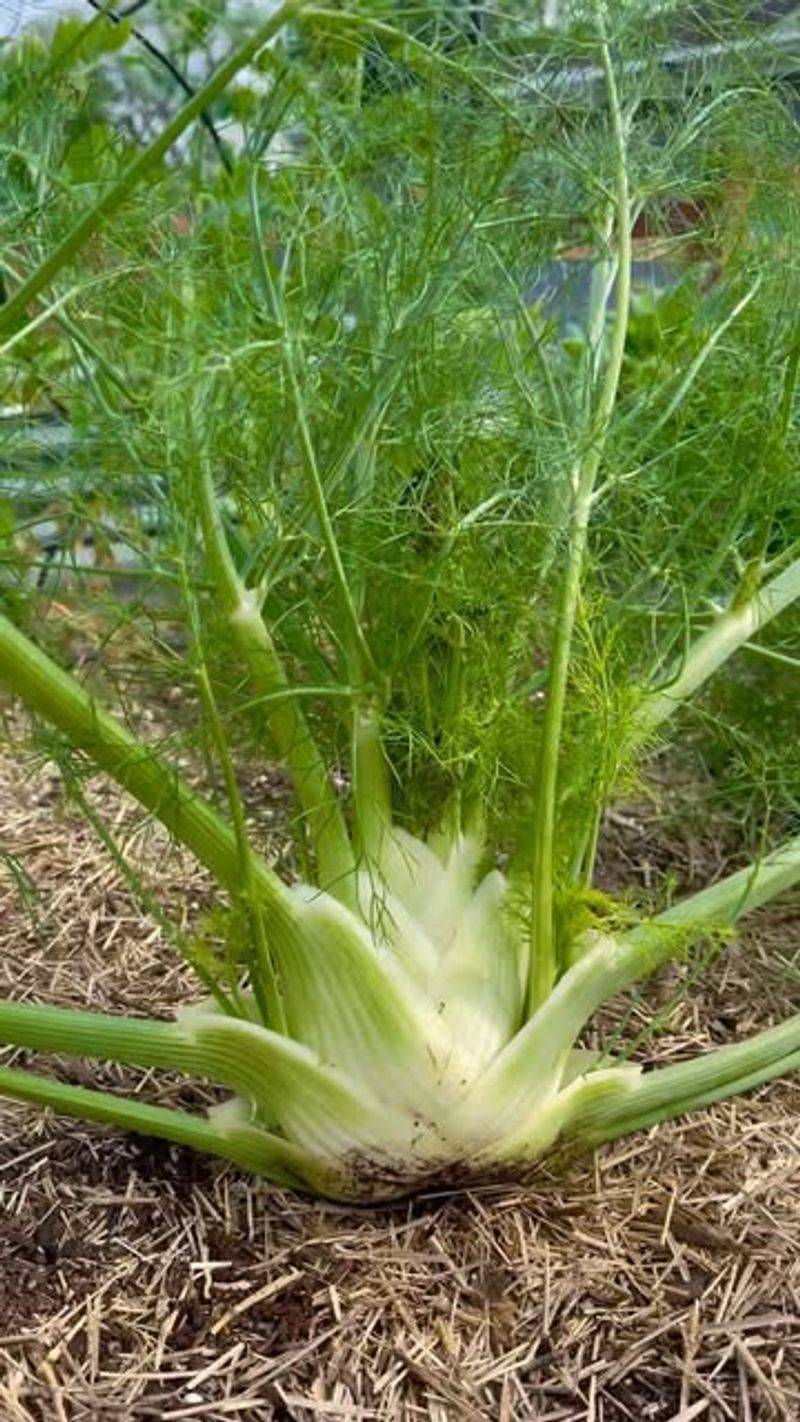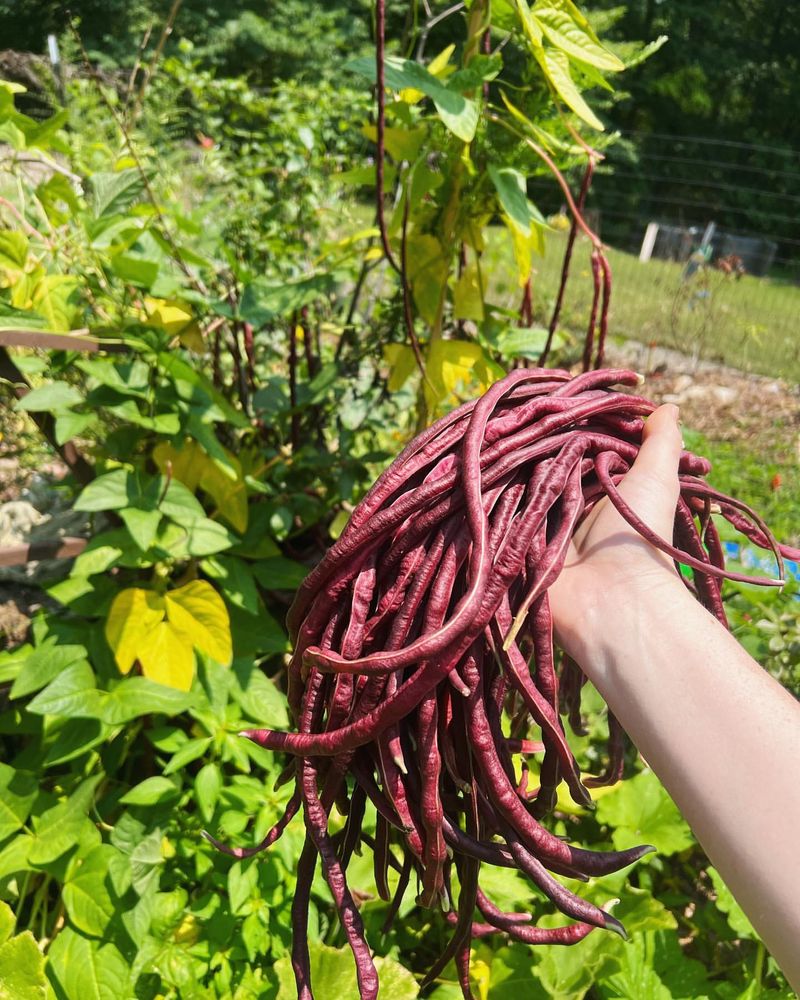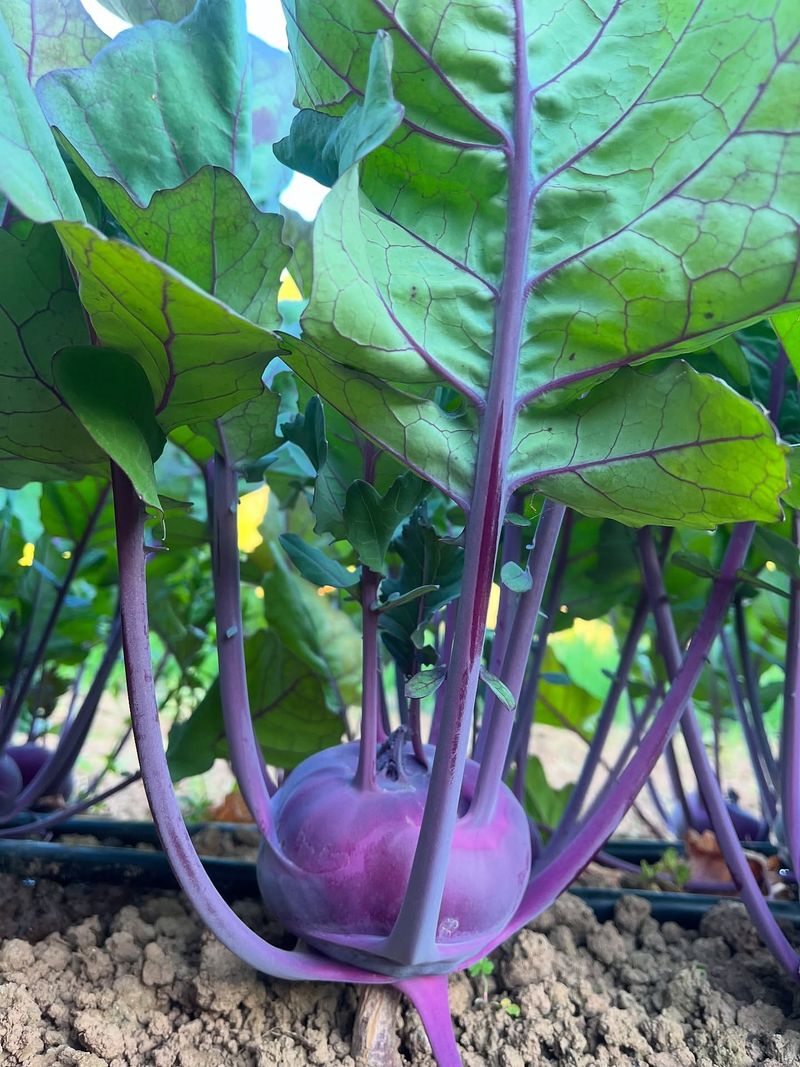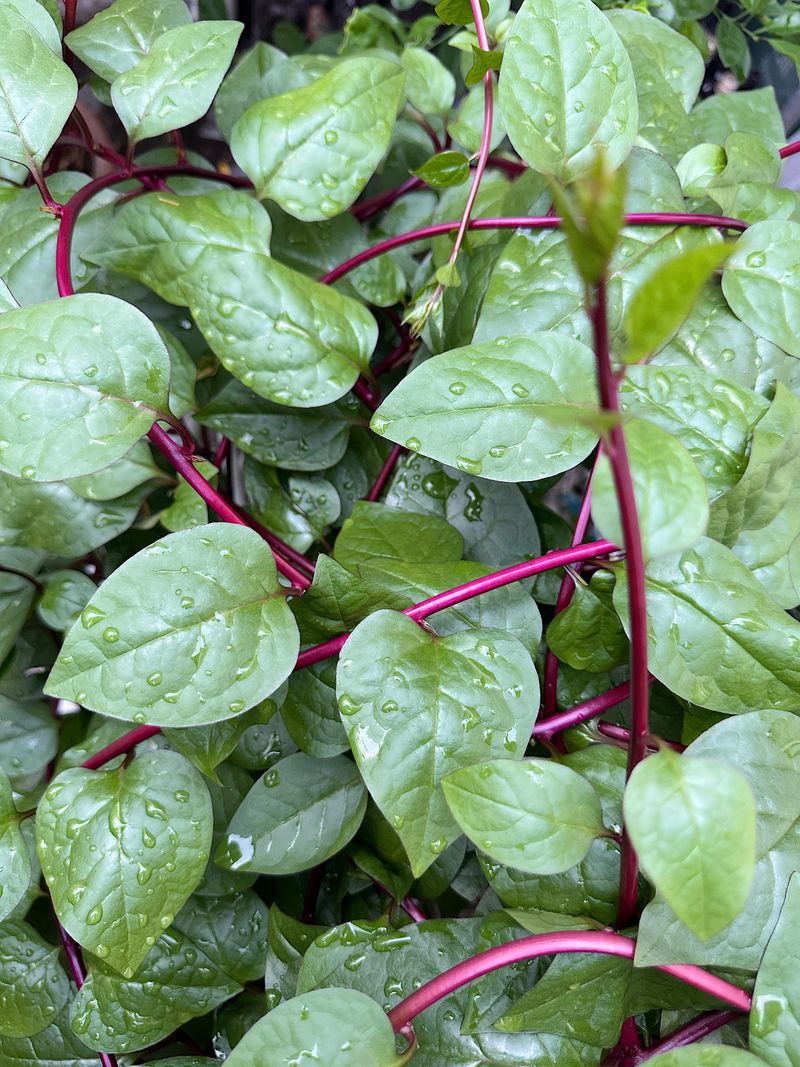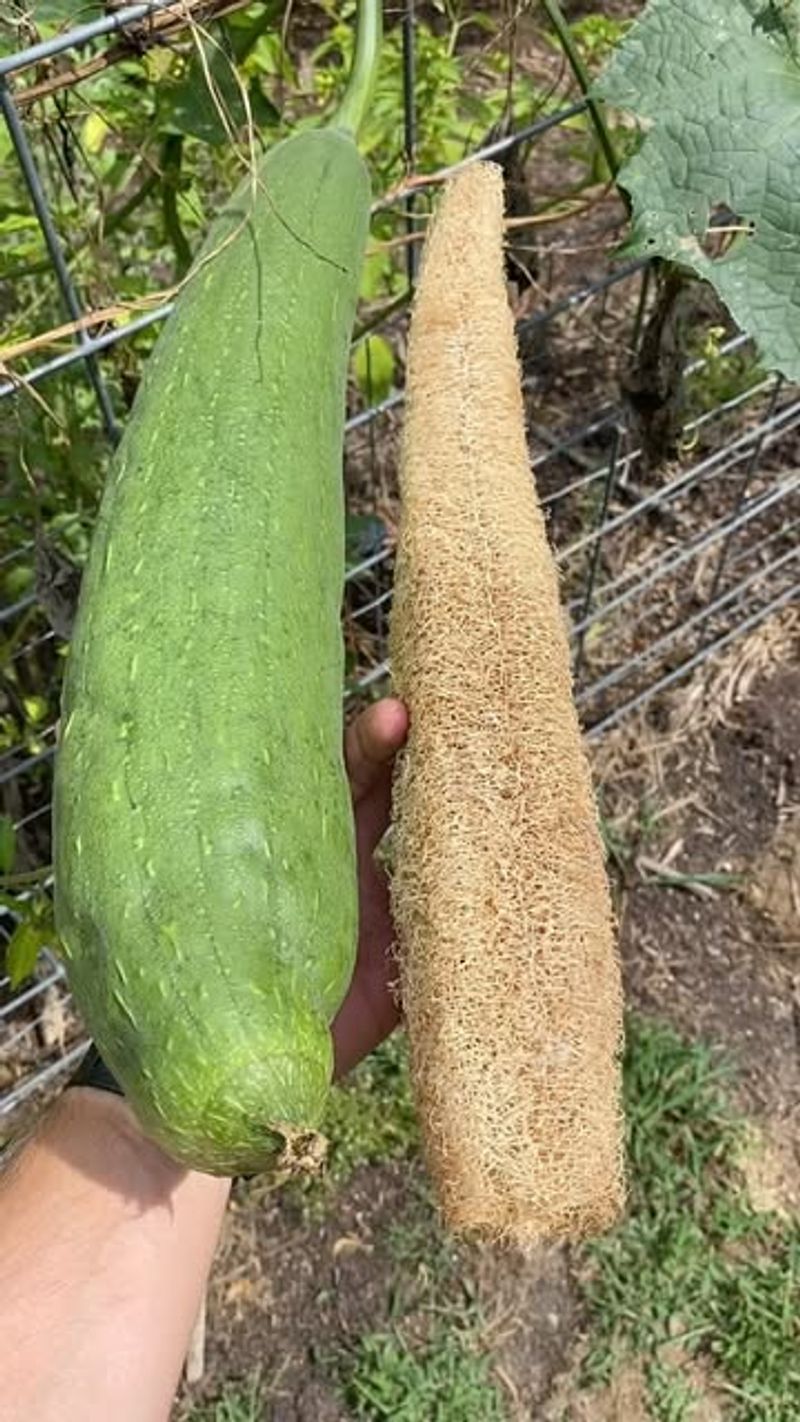Dig a little deeper this season and plant more than just the usual suspects. Pennsylvania soil has a knack for nurturing the unexpected—from colorful heirlooms to quirky edibles that turn heads at the dinner table.
These unique vegetables don’t just grow; they make a statement, offering bold flavors, wild textures, and the kind of bragging rights your neighbors will envy. It’s time to sow some variety and reap the rewards of a garden that breaks the mold.
1. Purple Dragon Carrots
These stunning purple-skinned carrots with orange cores will make your garden stand out from the crowd. Their vibrant color comes from anthocyanins – the same healthy compounds found in blueberries! Plant them in early spring or late summer in Pennsylvania’s loose, sandy soil.
The cooler temperatures make the colors more intense and the flavor sweeter than ordinary orange varieties.
2. Ground Cherries
Imagine tiny sweet fruits wrapped in paper-like husks that taste like pineapple and vanilla. Ground cherries are related to tomatillos but offer a delightful dessert-like flavor. Once established, they practically grow themselves and will often self-seed year after year.
Pennsylvania gardeners love them because they continue producing until the first hard frost, giving you months of sweet little treasures.
3. Romanesco Broccoli
Looking like something from another planet, Romanesco’s lime-green spiraling cones follow the Fibonacci sequence – actual math growing in your garden! Kids find it fascinating, and adults appreciate its nutty, mild flavor.
Plant in early spring or late summer in Pennsylvania. The cool fall temperatures bring out the best fractal patterns and sweetest taste in this conversation-starting vegetable that’s actually closer to cauliflower than broccoli.
4. Kohlrabi
Often called the “space cabbage,” kohlrabi grows a round, alien-looking bulb above ground. Its crisp texture and mild, apple-like flavor make it perfect for Pennsylvania gardens and dinner tables alike. Plant it twice yearly – once in early spring and again in late summer.
The bulbs size up quickly, ready to harvest in just 45-60 days. Pennsylvania’s cool springs and falls are ideal for this unusual vegetable that tastes great raw or roasted.
5. Lacinato Kale
Also called “dinosaur kale” for its bumpy, prehistoric-looking leaves, this Italian heirloom stands tall in Pennsylvania gardens. The blue-green leaves develop a sweeter flavor after experiencing frost, making it perfect for our climate.
Unlike other garden vegetables, Lacinato thrives well into Pennsylvania’s fall and even mild winters. Harvest the outer leaves as needed while the plant continues growing, providing nutritious greens for months longer than most garden vegetables.
6. Celeriac
Don’t judge this vegetable by its gnarly appearance! Beneath celeriac’s rough exterior lies a delicious heart with celery-like flavor perfect for soups and roasts. Pennsylvania’s long growing season gives this slow-developing root plenty of time to reach full size.
Start seeds indoors in late winter for transplanting once soil warms. With our state’s reliable rainfall, celeriac develops its best flavor without becoming woody. Harvest after the first light frosts for the sweetest taste.
7. Sunchokes
Native to North America, these sunflower relatives produce knobby, sweet tubers underground while displaying beautiful yellow flowers above. Pennsylvania gardeners appreciate their adaptability to our variable climate conditions.
Plant them once and you’ll have them forever – sometimes spreading more than you’d like! The tubers can remain in Pennsylvania’s ground through winter, allowing you to dig fresh ones as needed. Their nutty, artichoke-like flavor improves after the first frost sweetens them naturally.
8. Tomatillos
Growing tomatillos brings a touch of Mexican sunshine to Pennsylvania gardens! These green fruits wrapped in papery husks are essential for authentic salsa verde and add tangy zip to summer meals. Plant at least two for proper pollination after danger of frost passes.
They thrive during Pennsylvania’s hot summers when many other vegetables struggle. The husks turn from green to tan and split open when fruits are ready to harvest – a fun indicator that kids enjoy checking.
9. Yard-Long Beans
Despite their name, these Asian beans typically grow 18-30 inches long – still impressive when hanging from their vines! Their sweet flavor and tender texture remain even when the beans reach surprising lengths.
Give them a strong trellis to climb in a sunny Pennsylvania garden spot. Unlike regular green beans, yard-longs love our hot, humid summer weather. The fascinating pods grow visibly day by day, making them especially entertaining for young gardeners to monitor and measure throughout the season.
10. Fennel
With feathery foliage resembling dill but developing a bulbous base, fennel brings licorice-like flavor and aroma to Pennsylvania gardens. The entire plant is edible – bulb, stalks, leaves, and even the seeds later in the season.
Plant in spring or late summer for fall harvest in Pennsylvania. Our moderate rainfall helps develop tender bulbs without splitting. The tall plants with their delicate yellow flowers also attract beneficial insects like ladybugs and predatory wasps that help control garden pests naturally.
11. Chinese Red Noodle Beans
Imagine deep burgundy bean pods up to 18 inches long dangling from vines! These striking beans retain their red color when cooked and offer a delicious nutty flavor different from green beans. Their heat tolerance makes them perfect for Pennsylvania’s hot July and August weather when other bean varieties might struggle.
Give them a sturdy trellis in full sun. The beautiful red pods against green foliage create a stunning visual display that elevates your garden’s appearance while providing unique harvests.
12. Purple Vienna Kohlrabi
The vibrant purple skin of this kohlrabi variety makes it doubly unique in Pennsylvania gardens. Beneath the purple exterior hides crisp white flesh with a mild flavor similar to broccoli stems but sweeter.
Pennsylvania’s spring and fall temperatures are perfect for growing this cool-weather crop. The alien-looking bulbs develop above ground, making them easy to monitor for harvest size. Children are often fascinated by their unusual appearance – like purple UFOs landing in the garden!
13. Rat’s Tail Radish
Unlike traditional radishes where we eat the root, rat’s tail radishes are grown for their edible seed pods! These unusual, spicy pods grow up to 6 inches long and add a peppery crunch to salads and stir-fries.
Perfect for Pennsylvania’s climate, they tolerate both cool springs and hot summers. Let the plants flower instead of pulling them up, then watch the fascinating seed pods develop. They continue producing all season long, offering months of harvests from a single planting – much longer than root radishes.
14. Malabar Spinach
Not actually spinach but a heat-loving vine with similar-tasting leaves, Malabar spinach thrives during Pennsylvania’s hottest months when true spinach bolts and becomes bitter. The glossy leaves and reddish stems add ornamental value to gardens.
Provide a trellis for this beautiful climber that can reach 10 feet in a season! The succulent leaves remain tender and productive all summer long. Pennsylvania gardeners appreciate having fresh “spinach” during July and August when traditional greens struggle in the heat.
15. Luffa Gourds
Yes, those natural bath sponges actually grow in gardens! Luffa gourds start as edible vegetables when young and transform into fibrous sponges when mature. Pennsylvania’s growing season is just long enough to grow these fascinating plants.
Plant them after frost danger passes and provide strong support for the vigorous vines. Young gourds taste similar to zucchini. Let some mature fully until the skin turns brown and rattles when shaken. Peel away the skin to reveal the natural sponge inside – a unique garden-to-bathroom crop!

